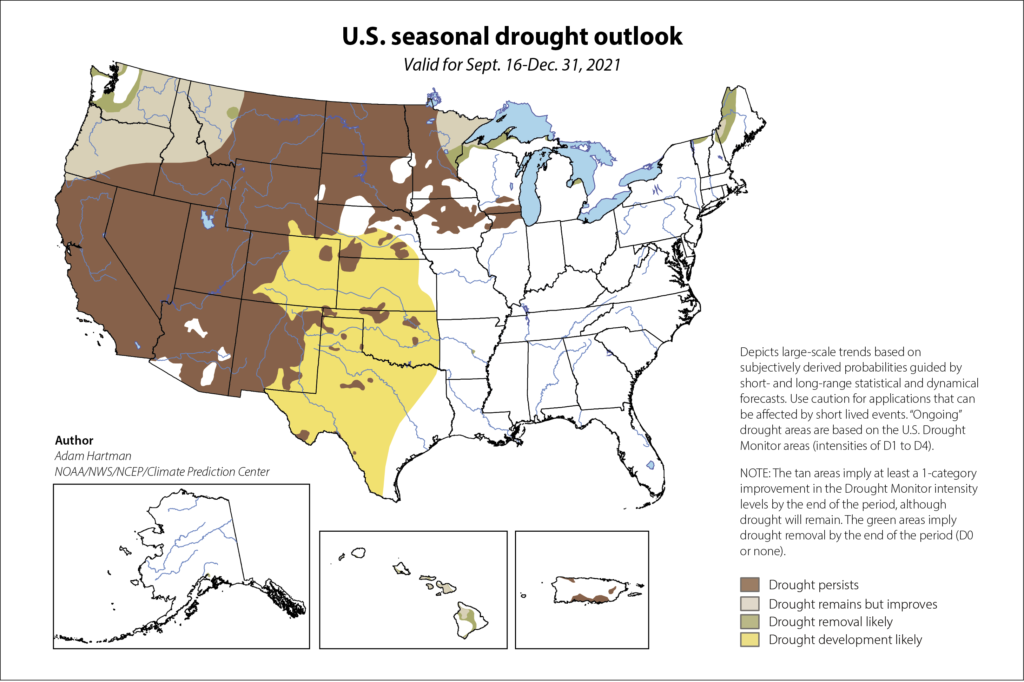
The National Weather Service indicates a transition from “neutral to La Niña is favored in the next couple of months.” The return of La Niña, a cooling of equatorial water across the central and eastern Pacific Ocean, could mean that drought coverage across the United States will markedly shift during the autumn and winter. In recent weeks, there has already been improvement in the drought situation across the northern Great Plains and upper Midwest, while short-term dryness has replaced previously wet conditions from the central and southern Great Plains into the mid- South. Those trends may continue, as the 2021-2022 cold season should feature the likelihood of wetter-than-normal weather in parts of the North, while warmer- and drier-than-normal conditions can be expected in the Southwest and southern Great Plains.
Meanwhile, serious long-term drought issues may persist in much of the West. Drought has covered at least 80% of the 11-state Western region since April 2021. Reservoir storage in California stood at just 60% of the end-of-August average, while statewide storage in Oregon, Nevada and New Mexico was less than one-half of normal. A robust monsoon circulation during the summer of 2021 provided limited Southwestern drought relief but failed to ameliorate longer-term concerns such as groundwater shortages and low streamflow and reservoir levels. With the expected return of drier-than-normal weather during the 2021-2022 cold season, Southwestern drought may re-intensify. However, La Niña should contribute to autumn and winter drought relief in some of the hardest-hit Northern drought areas.
In short, national drought coverage should remain elevated through the autumn and winter, but changing weather patterns could lead to different regions being most significantly affected. More than 40% of the contiguous United States has been covered by drought each week since Sept. 22, 2020, and that is not likely to change over the next several months. Historically, about 20% of the country should be affected by drought at any given time, based on U.S. Drought Monitor methodology.
8280 Willow Oaks Corporate Drive | Suite 630 | Fairfax, VA 22031
Tel: 703.536.7080 | Fax: 703.536.7019
HOME | ABOUT US | ADVERTISE | SUBSCRIBE | CONTACT | PRIVACY POLICY | IA ANTITRUST STATEMENT